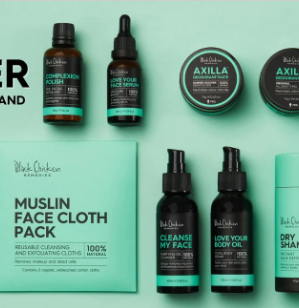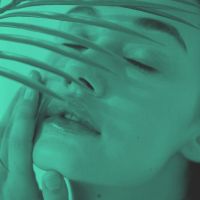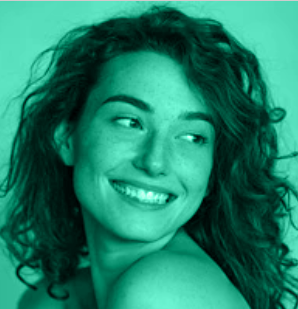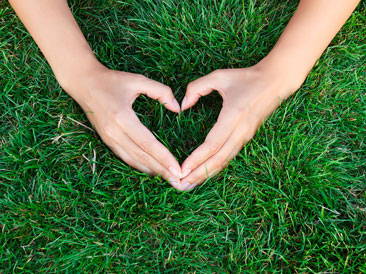Understanding the Basics: Using Essential Oils for Well-being
Essential oils have been cherished for centuries for their therapeutic properties and ability to enhance overall well-being. These concentrated plant extracts can be incorporated into your daily routine in a variety of ways to support mental, emotional, and physical health. Whether you are new to essential oils or have some experience, this guide aims to provide you with practical tips and recipes to make the most of these natural remedies.
From creating calming atmospheres to alleviating minor ailments, essential oils offer versatile solutions for everyday challenges. In this introduction, you’ll get a glimpse into the many benefits of essential oils and how you can seamlessly integrate them into your lifestyle.
Benefits of Essential Oils
Physical Benefits
Essential oils have been praised for their numerous physical benefits, offering natural solutions for various health concerns. One significant advantage is their ability to alleviate pain and inflammation. Oils such as peppermint and eucalyptus contain compounds that can provide relief from headaches, muscle soreness, and joint pain. When diluted and applied topically, these oils can penetrate the skin to deliver their anti-inflammatory properties directly to the affected area, offering a soothing and calming effect.
In addition to pain relief, essential oils are known for their capacity to enhance respiratory function. Oils like eucalyptus and tea tree have decongestant and antimicrobial properties that can help clear the airways and support lung health. Inhaling these oils through steam inhalation or using a diffuser can break down mucus and improve breathing, making them particularly beneficial during cold and flu season. Moreover, the antibacterial and antiviral properties of these oils can help fend off infections, contributing to overall respiratory wellness.
Another notable physical benefit of essential oils is their ability to improve skin health. Oils such as lavender, tea tree, and chamomile are well-regarded for their skin-soothing properties and ability to help treat various skin conditions. These oils can aid in reducing acne, soothing irritated skin, and promoting faster healing of wounds and burns. When incorporated into a skincare regimen, essential oils can enhance the skin's appearance by reducing redness, irritation, and signs of aging, resulting in a healthier and more radiant complexion.
Mental Benefits
One of the most significant mental benefits of using essential oils is their ability to alleviate stress and anxiety. Certain essential oils, such as lavender, chamomile, and bergamot, have calming properties that can help soothe the mind and reduce feelings of tension. These oils can be used in a variety of ways, including aromatherapy diffusers, bath soaks, and massage oils, to create a relaxing environment that promotes mental clarity and emotional balance.
Another notable mental benefit is the enhancement of cognitive function. Essential oils like rosemary, peppermint, and lemon have been shown to improve concentration and memory. Inhaling these oils can stimulate the brain, increase alertness, and enhance overall cognitive performance. Whether you are studying for an exam or need a mental boost at work, incorporating these essential oils into your daily routine can help improve focus and productivity.
Additionally, essential oils can also aid in improving sleep quality, which is crucial for mental well-being. Poor sleep can lead to a range of mental health issues, including irritability, mood swings, and difficulty concentrating. Essential oils such as lavender and cedarwood are known for their sedative properties, making them effective in promoting restful sleep. Using these oils before bedtime, either through a diffuser or by applying them topically, can help create a calming bedtime ritual that supports better sleep and overall mental health.
Different Types of Essential Oils
Lavender
Lavender essential oil is one of the most popular and versatile essential oils used in aromatherapy. It is extracted from the flowers of the lavender plant, primarily through steam distillation. Known for its calming and soothing properties, lavender oil is often used to alleviate stress, anxiety, and insomnia. Its pleasant floral scent also makes it a favorite in perfumes and cosmetic products. Additionally, lavender oil has antiseptic and anti-inflammatory properties, making it useful in treating minor burns, insect bites, and other skin irritations.
There are several types of lavender essential oils, each with its unique characteristics and benefits. The most common type is Lavandula angustifolia, also known as true lavender or English lavender. This variety is highly valued for its sweet, floral aroma and is often used in aromatherapy and massage oils. Another type is Lavandula latifolia, commonly referred to as spike lavender. Spike lavender oil has a stronger, more camphoraceous scent and is typically used for respiratory issues and muscle aches. Lavandula stoechas, also known as Spanish lavender, has a distinct, more pungent fragrance and is less commonly used for essential oil extraction but still offers therapeutic benefits.
When choosing lavender essential oil, it is important to consider the specific type and its intended use. For relaxation and sleep, Lavandula angustifolia is generally the best choice due to its gentle and calming aroma. If you are looking for an oil to help with respiratory problems or muscle pain, Lavandula latifolia might be more suitable. Always ensure that you are purchasing pure, high-quality essential oils from reputable sources to fully enjoy their therapeutic benefits. By understanding the differences between various types of lavender oils, you can make informed decisions and effectively incorporate them into your wellness routine.
Peppermint
Peppermint essential oil is one of the most versatile and widely used essential oils available. Extracted from the leaves of the peppermint plant through steam distillation, this invigorating oil has a distinct, minty aroma that can be both refreshing and soothing. Peppermint oil contains high levels of menthol, which contributes to its cooling and anti-inflammatory properties, making it a popular choice for alleviating headaches, muscle pain, and digestive issues.
In aromatherapy, peppermint essential oil is often used to enhance mental clarity and concentration. Its stimulating scent can help improve focus and reduce feelings of fatigue or stress. For those experiencing respiratory issues, inhaling peppermint oil can open up the airways and provide relief from symptoms of congestion and sinusitis. Additionally, peppermint oil can be applied topically, but it should always be diluted with a carrier oil to prevent skin irritation.
Peppermint oil is also known for its antimicrobial properties, making it an effective natural remedy for oral health. Adding a drop of peppermint essential oil to your toothpaste or mouthwash can help fight bad breath and maintain healthy gums. Moreover, it can be used as a natural insect repellent, providing a chemical-free way to keep pests at bay. Whether used for its therapeutic benefits or practical applications, peppermint essential oil is a valuable addition to any holistic wellness routine.
Using Essential Oils in Daily Routines
Aromatherapy
Incorporating essential oils into your daily routines can be a simple yet effective way to enhance your overall well-being. One of the easiest methods is through diffusion. Using an essential oil diffuser, you can disperse the aroma of your chosen oils throughout your living space. This not only makes your home smell delightful but can also provide various therapeutic benefits. For instance, diffusing lavender oil in the evening can help promote relaxation and improve sleep quality, while citrus oils like lemon or orange can invigorate and uplift your mood in the morning.
Another practical way to use essential oils is by adding them to your personal care products. A few drops of essential oil can be mixed with your favorite lotion, shampoo, or body wash to enhance their benefits. For example, tea tree oil can be added to a facial cleanser to help manage acne, while peppermint oil can be combined with a carrier oil and massaged into the scalp to stimulate hair growth and soothe irritation. Always remember to do a patch test first to ensure you don't have an adverse reaction to the oils.
Incorporating essential oils into your cleaning routine is another excellent way to enjoy their benefits. Many essential oils possess natural antibacterial and antiviral properties, making them effective alternatives to chemical cleaners. For instance, you can add a few drops of eucalyptus or tea tree oil to your cleaning spray to disinfect surfaces. Similarly, using lemon oil can help to cut through grease and leave a fresh, clean scent. Not only does this make your home cleaner and more pleasant-smelling, but it also reduces your exposure to potentially harmful chemicals found in conventional cleaning products.
Topical Application
Topical application of essential oils can be a highly effective method for benefiting from their therapeutic properties. When applied to the skin, these oils are absorbed into the bloodstream, offering localised and systemic advantages. It is crucial to dilute essential oils with a carrier oil, such as coconut or jojoba oil, to prevent skin irritation and to ensure safe usage. Popular topical applications include massages, where the oils can help soothe muscle tension, and facial routines, which can address various skin concerns like acne or dryness.
When integrating essential oils into daily routines, it's beneficial to focus on areas where absorption can be maximised. Applying oils to the soles of the feet, behind the ears, or on the wrists are common practices. These areas have numerous nerve endings and thin skin, enhancing the absorption rate. Additionally, certain essential oils like lavender and chamomile can be applied to pulse points to promote relaxation and stress relief throughout the day, providing a natural boost to emotional well-being.
It's important to consider individual skin types and sensitivities when using essential oils topically. Conducting a patch test by applying a small amount of diluted oil to a discrete area of skin can help determine any adverse reactions before more extensive use. Remember to consult with a healthcare professional if you have any pre-existing conditions or concerns to ensure the safe and effective use of essential oils in your daily routine.
DIY Essential Oil Recipes
Relaxing Bath Blend
A relaxing bath blend is a luxurious way to unwind after a long day, using the therapeutic properties of essential oils to soothe both the mind and body. Essential oils have been used for centuries for their natural healing properties and can significantly enhance your bathing experience. To create your own relaxing bath blend, start with a base of Epsom salt, which helps to relieve muscle tension and detoxify the body. Add a few drops of lavender essential oil, known for its calming and stress-relieving effects, and a couple of drops of chamomile essential oil, which is excellent for promoting relaxation and reducing anxiety.
Another wonderful addition to your bath blend is ylang-ylang essential oil. This exotic oil not only has a beautiful floral scent but also helps to balance and uplift your mood. To ensure that the oils disperse evenly in the water, mix them with a tablespoon of a carrier oil such as jojoba or sweet almond oil before adding them to the bath. This prevents the oils from sitting on the surface and maximises their absorption into your skin. Light some candles and play soft music to create a tranquil atmosphere, allowing you to fully immerse yourself in the relaxing experience.
It is important to remember that essential oils are highly concentrated and should be used with care. Always perform a patch test before using a new essential oil to ensure you do not have an allergic reaction. Additionally, pregnant women and individuals with certain health conditions should consult a healthcare professional before using essential oils. By following these guidelines and experimenting with different combinations, you can create a personalised relaxing bath blend that enhances your well-being and provides a much-needed respite from everyday stress.
Energising Room Spray
Creating your own energising room spray using essential oils is a simple and effective way to invigorate your living space. Essential oils like peppermint, lemon, and rosemary are known for their uplifting and refreshing properties, making them perfect choices for an energising blend. To make your own room spray, you will need a small spray bottle, distilled water, and your selected essential oils. Start by filling the spray bottle with distilled water, then add about 20-30 drops of essential oil in total. You can customise the blend based on your preferences, such as 10 drops of peppermint, 10 drops of lemon, and 10 drops of rosemary.
Once you have combined the ingredients, shake the bottle well to mix them thoroughly. This step ensures that the essential oils are evenly distributed throughout the water. Before each use, give the bottle a good shake, as essential oils tend to separate from water over time. Spray the mixture around your room, focusing on areas where you spend the most time or where you need the most energy. The invigorating aroma will help stimulate your senses and create a more vibrant and lively atmosphere.
In addition to revitalising your space, using an energising room spray can also offer various benefits for your well-being. The refreshing scent of peppermint can help improve focus and concentration, while lemon is known to enhance mood and reduce stress. Rosemary, on the other hand, can boost mental clarity and reduce fatigue. By incorporating these essential oils into your daily routine, you can create a more dynamic environment that supports your overall health and productivity.
Safety Tips and Precautions
Dilution Guidelines
When using essential oils, it is crucial to adhere to proper dilution guidelines to ensure safety and avoid adverse reactions. Essential oils are highly concentrated substances, and applying them directly to the skin can cause irritation, sensitisation, or even burns. Generally, a safe dilution ratio for adults is between 1% to 3%, which translates to about 6 to 18 drops of essential oil per ounce of carrier oil. For children, elderly individuals, or those with sensitive skin, a lower dilution rate of 0.5% to 1% is recommended.
Carrier oils, such as coconut oil, jojoba oil, or sweet almond oil, are commonly used to dilute essential oils. These oils not only help mitigate the potency of the essential oils but also aid in their absorption into the skin. It is important to thoroughly mix the essential oil with the carrier oil before application to ensure an even distribution and to maximise the therapeutic benefits. Moreover, always perform a patch test before using a new essential oil blend to check for any allergic reactions or skin sensitivities.
In addition to dilution, other precautions should be taken when using essential oils. Avoid using essential oils near sensitive areas such as the eyes, ears, and mucous membranes. Pregnant or breastfeeding women, as well as individuals with certain medical conditions, should consult a healthcare provider before using essential oils. Proper storage of essential oils in a cool, dark place is also necessary to maintain their efficacy and prolong their shelf life. By following these safety tips and precautions, you can enjoy the benefits of essential oils while minimising the risk of adverse effects.
Patch Testing
Patch testing is a crucial step to ensure the safe use of essential oils, especially if you have sensitive skin or are prone to allergies. To perform a patch test, dilute a small amount of the essential oil with a carrier oil such as coconut or jojoba oil. Apply this mixture to a small patch of skin, typically on the inside of your forearm or behind your ear. Cover the area with a bandage and wait for 24 hours to monitor for any adverse reactions such as redness, itching, or swelling. If you observe any of these symptoms, it is a clear indication that the oil may not be suitable for your skin, and you should avoid using it.
It is important to note that some essential oils are more likely to cause skin reactions than others. Oils such as cinnamon, clove, and oregano are known to be particularly potent and should be used with extra caution. Even if you do not experience an immediate reaction during the patch test, it is advisable to start with a lower concentration and gradually increase it as your skin becomes accustomed to the oil. This will help minimise the risk of sensitisation over time.
Additionally, remember that essential oils are highly concentrated substances and should never be applied directly to the skin without proper dilution. Always follow the recommended dilution ratios and guidelines provided by reputable sources, and consult with a healthcare professional if you are unsure about the appropriate usage. By taking these precautions, you can enjoy the numerous benefits of essential oils while ensuring your safety and well-being.
Conclusion: Enhancing Well-being with Essential Oils
Incorporating essential oils into your daily routine can significantly enhance your well-being. From aromatherapy to topical applications, there are numerous ways to experience the therapeutic benefits these natural extracts offer. Whether you're looking to reduce stress, improve sleep, or boost your mood, essential oils provide versatile solutions that can easily fit into your lifestyle.
Experiment with different blends and methods to find what works best for you. Remember to always use high-quality oils and follow safety guidelines to ensure the best outcomes. By integrating essential oils mindfully, you can create a more balanced and harmonious daily routine, contributing to your overall physical and mental health.






















